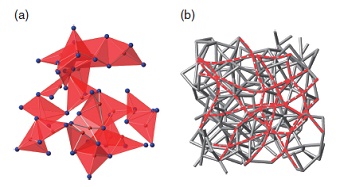Volume 65, Issue 10
Special Feature : The Contribution of Glass to Our Life and Industry, and the Future
Displaying 1-14 of 14 articles from this issue
- |<
- <
- 1
- >
- >|
Preface
-
Article type: Preface
2022 Volume 65 Issue 10 Pages 437
Published: October 10, 2022
Released on J-STAGE: October 10, 2022
Download PDF (322K)
Special Feature : The Contribution of Glass to Our Life and Industry, and the Future
-
Article type: Introduction
2022 Volume 65 Issue 10 Pages 438-439
Published: October 10, 2022
Released on J-STAGE: October 10, 2022
Download PDF (240K) -
Article type: Overview
2022 Volume 65 Issue 10 Pages 440-447
Published: October 10, 2022
Released on J-STAGE: October 10, 2022
Download PDF (5198K) -
Article type: Current Topics
2022 Volume 65 Issue 10 Pages 448-453
Published: October 10, 2022
Released on J-STAGE: October 10, 2022
Download PDF (1964K) -
 Article type: Current Topics
Article type: Current Topics
2022 Volume 65 Issue 10 Pages 454-459
Published: October 10, 2022
Released on J-STAGE: October 10, 2022
-
Article type: Current Topics
2022 Volume 65 Issue 10 Pages 460-465
Published: October 10, 2022
Released on J-STAGE: October 10, 2022
Download PDF (4758K) -
Article type: Current Topics
2022 Volume 65 Issue 10 Pages 466-472
Published: October 10, 2022
Released on J-STAGE: October 10, 2022
Download PDF (4939K) -
Article type: Current Topics
2022 Volume 65 Issue 10 Pages 473-477
Published: October 10, 2022
Released on J-STAGE: October 10, 2022
Download PDF (1357K)
Regular article
-
Article type: Regular article
2022 Volume 65 Issue 10 Pages 478-483
Published: October 10, 2022
Released on J-STAGE: October 10, 2022
Download PDF (2533K)
Report
Conference Report
-
Article type: Report
2022 Volume 65 Issue 10 Pages 484
Published: October 10, 2022
Released on J-STAGE: October 10, 2022
Download PDF (439K) -
Article type: Report
2022 Volume 65 Issue 10 Pages 485-486
Published: October 10, 2022
Released on J-STAGE: October 10, 2022
Download PDF (2438K)
Science Café
-
Article type: Science Café
2022 Volume 65 Issue 10 Pages 487-489
Published: October 10, 2022
Released on J-STAGE: October 10, 2022
Download PDF (1143K)
Diversity Promotion
-
Article type: Science Café
2022 Volume 65 Issue 10 Pages 490
Published: October 10, 2022
Released on J-STAGE: October 10, 2022
Download PDF (266K)
News & Trends
-
Article type: News & Trends
2022 Volume 65 Issue 10 Pages 491
Published: October 10, 2022
Released on J-STAGE: October 10, 2022
Download PDF (315K)
- |<
- <
- 1
- >
- >|







